The United States is battling invasive insects on two coasts. In Washington state, government workers are trying hard to get rid of Asian giant hornets. In the eastern US, there’s a huge effort to stamp out spotted lanternflies.
Both insects are “invasive” – they’re not found naturally in North America and they’re threatening other kinds of plants and animals that do belong. Entomologists are worried that these insects, which came from Asia originally, could spread, causing big problems.
Asian Giant Hornets on the West Coast
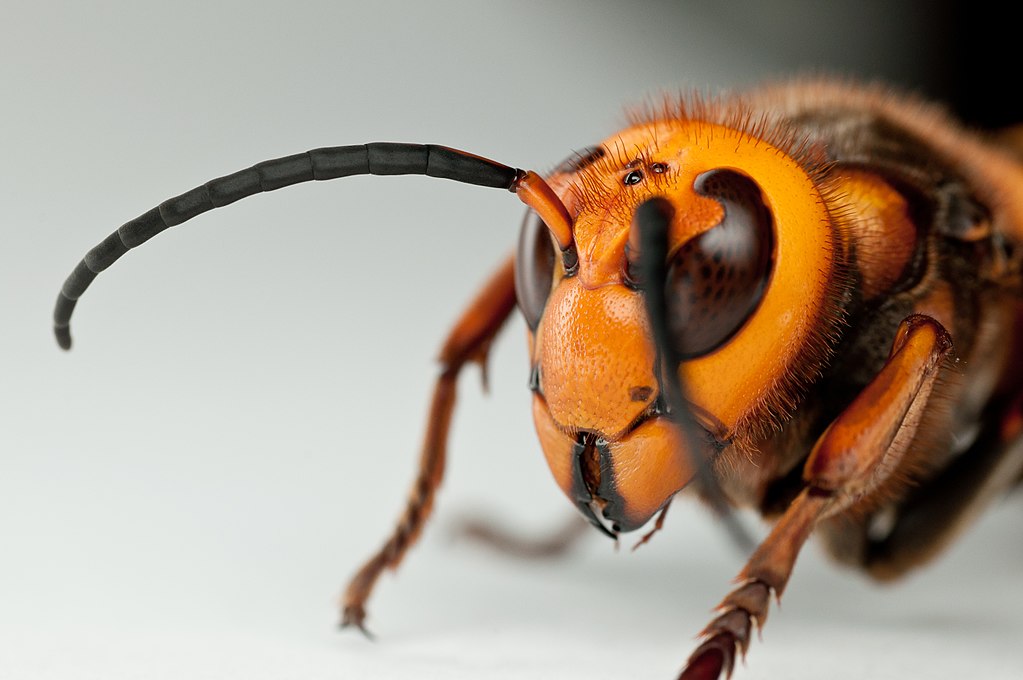
(Source: Yasunori Koide [CC BY-SA], via Wikimedia Commons.)
Asian giant hornets, with their large eyes and tiger-like stripes, are the world’s largest hornets. They can grow up to 2 inches (5 centimeters) long and can fly up to 20 miles (32 kilometers) per hour.
Some people call these insects “murder hornets”. That’s because they can quickly destroy large numbers of bees or other insects.
When a hornet finds a beehive, it marks the hive with a special chemical. It returns with other hornets. Together, they attack the hive, using their mandibles – claw-like pincers – to tear off the heads of the bees. They take the body parts of the bees home to feed their young.
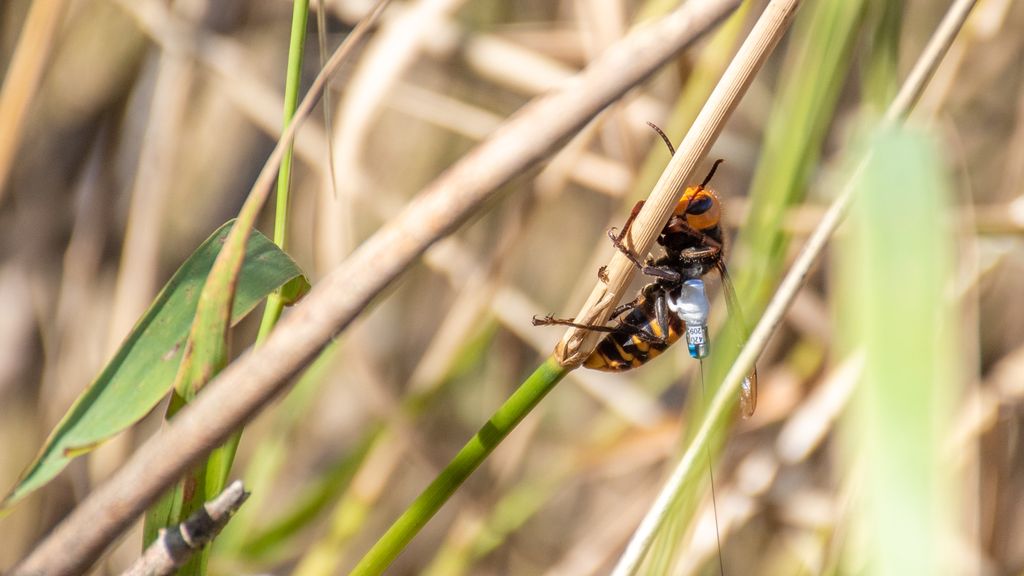
(Source: WSDA.)
When scientists first found Asian giant hornets in Washington state in 2019, they worked quickly to track down their nests. Last November, by attaching an electronic tracker to a hornet, scientists were able to find and remove a nest with about 500 hornets.
This year, scientists have already found three Asian giant hornet nests, not far from where the other nests were found. The first nest they found held over 1,500 hornets. They have removed two of the nests, and will remove the third one soon. They plan to keep going until they completely remove the hornets.
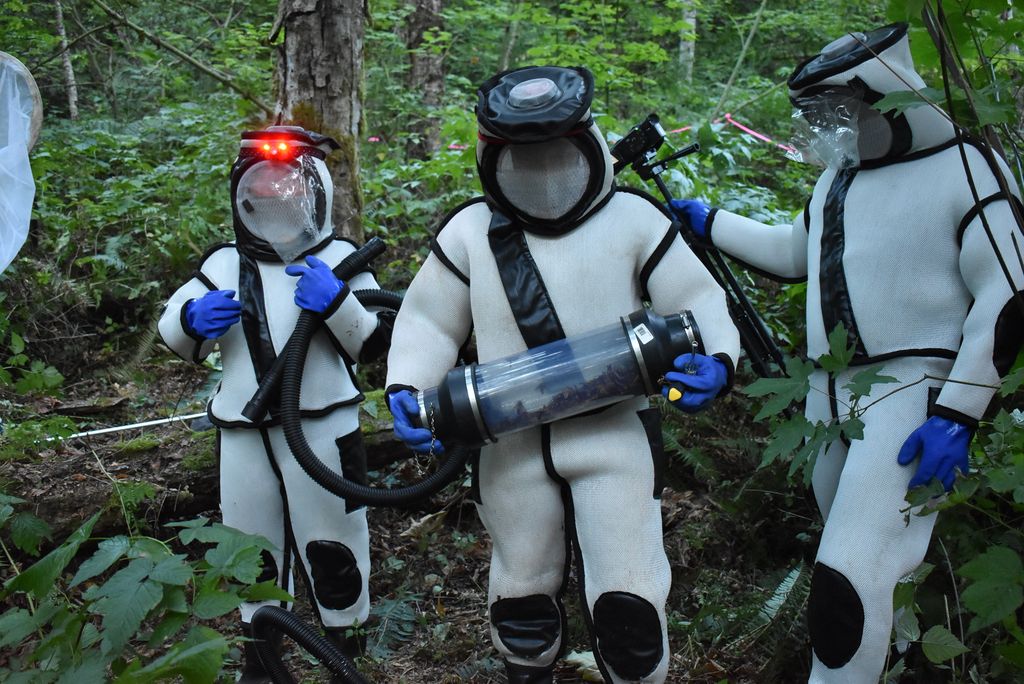
(Source: WSDA.)
Scientists in nearby Canada are also looking for the hornets, which were first spotted in British Columbia in 2019.
Spotted Lanternflies in the East
The spotted lanternflies causing problems in the eastern US aren’t quite so scary. These leaf-hoppers are annoying, but not dangerous to humans or other insects. But they spread easily, cause great damage to trees and plants, and can be nearly impossible to stop.
Lanternflies damage plants by sucking sap from them. There can be so many insects that trees are completely covered. The insects poop out a sweet, sticky liquid. This “honeydew” can cause plants to get covered with mold. Lanternflies can easily destroy large areas of fruit trees or grapevines, causing major problems for farmers.
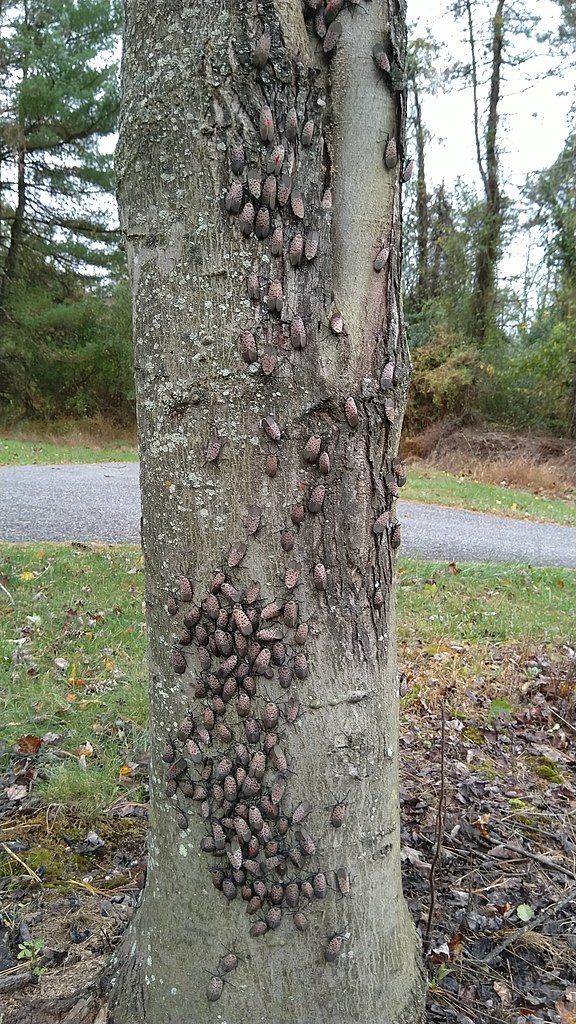
(Source: Rkillcrazy [CC BY-SA 4.0], via Wikimedia Commons.)
Though lanternflies rarely fly, they have a tricky way of spreading. They lay 30 to 50 eggs on hard surfaces, such as trees or stones – even cars, trucks, and trains. If a vehicle carries eggs to a new location, lanternflies can start attacking plants there, too.
Lanternflies were first spotted in Pennsylvania in 2014. Now they’re in counties across the state, as well as in Connecticut, Maryland, Delaware, New Jersey, New York, Virginia, and West Virginia.
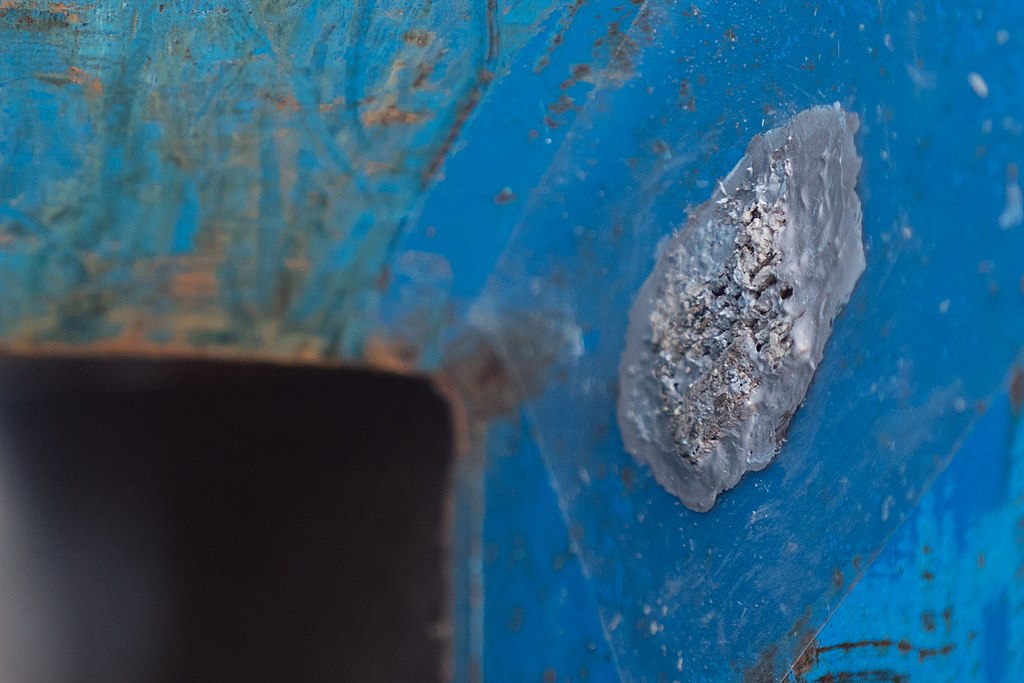
(Source: Lance Cheung, USDA [Public domain], via Wikimedia Commons.)
Experts have some simple rules for dealing with lanternflies. They say to scrape off any eggs you see, and put them in alcohol. And if you see an adult: “Kill it! Squash it, smash it…just get rid of it.”
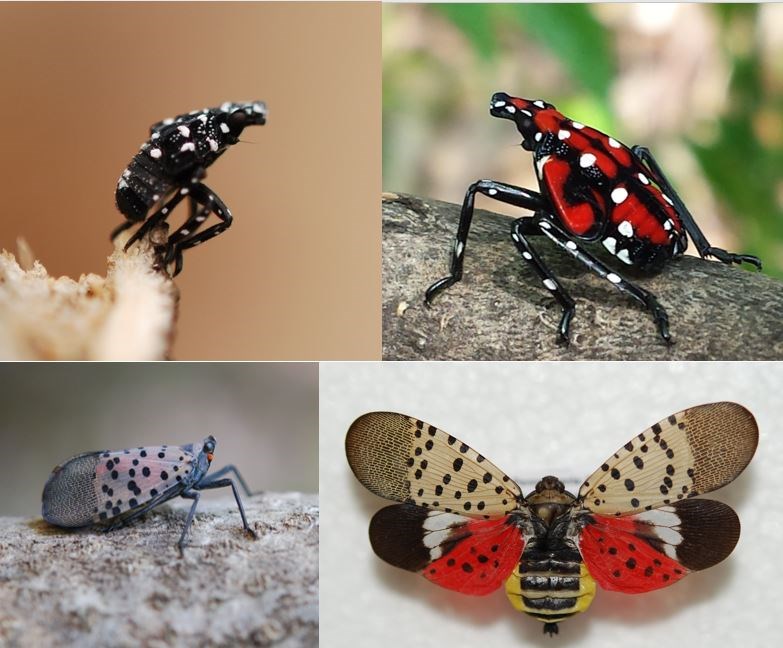
(Source: National Park Service.)
Did You Know…?
Scientists in Washington state are also very worried about another invasive insect from Asia – the Japanese beetle. So far this year, they’ve found over 20,000 of them. Japanese beetles can eat the leaves and flowers of over 300 different kinds of plants, and could cause huge problems if they get settled in farming areas.
